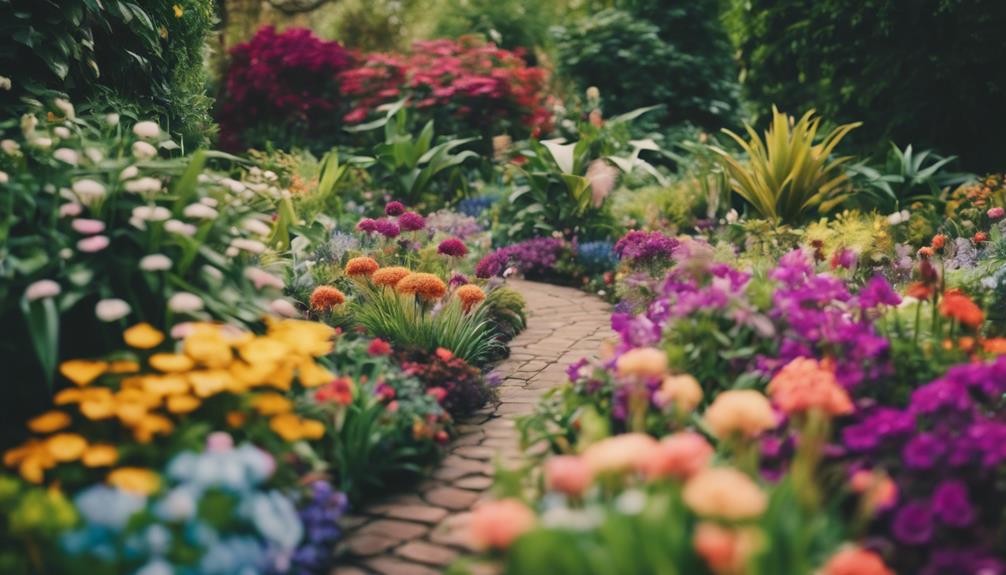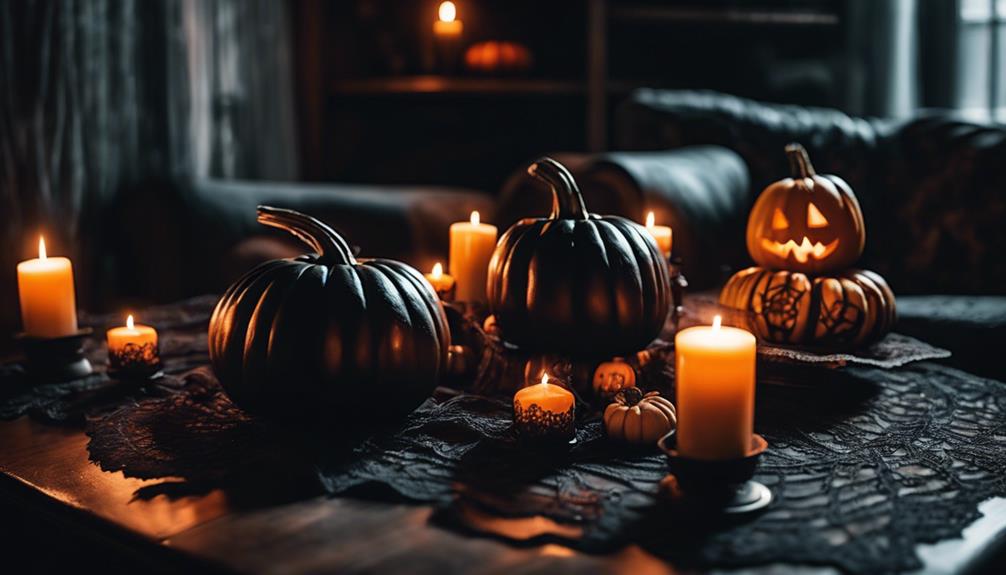Step into a botanical paradise where sustainability and biodiversity flourish, embracing native plants in a Garden of Eden that has Mother Nature blushing with pride. Discover a modern approach that supports local ecosystems, requires less maintenance, and attracts wildlife while enhancing natural beauty. Immerse yourself in designing pollinator-friendly habitats, selecting native species, and promoting biodiversity in urban areas. See how this planting style not only benefits the environment but also creates a stunning landscape that will leave you in awe. Explore more about this eco-friendly trend and its impact on our surroundings.
Key Takeaways
- Modern gardening approach embracing sustainability and biodiversity.
- Integration of native plants to support local ecosystems.
- Attracting wildlife while reducing water and maintenance needs.
- Enhancing beauty with diverse plant species.
- Promoting ecosystem health and conservation principles.
The Concept of Garden of Eden 2.0
What exactly defines the concept of Garden of Eden 2.0?
At its core, Garden of Eden 2.0 is a modern approach to gardening that embraces sustainability and biodiversity.
One key aspect of this innovative planting style is the integration of native plants. By incorporating native flora into your garden, you aren't only enhancing its beauty but also supporting the local ecosystem.
Native plants are uniquely adapted to thrive in their specific region, requiring less water and maintenance compared to exotic species. Additionally, these plants attract native pollinators and wildlife, promoting a healthy and balanced environment.
Embracing native plants in your Garden of Eden 2.0 not only connects you more deeply with the natural world but also helps to preserve and protect the local ecosystem.
Benefits of Native Plant Integration
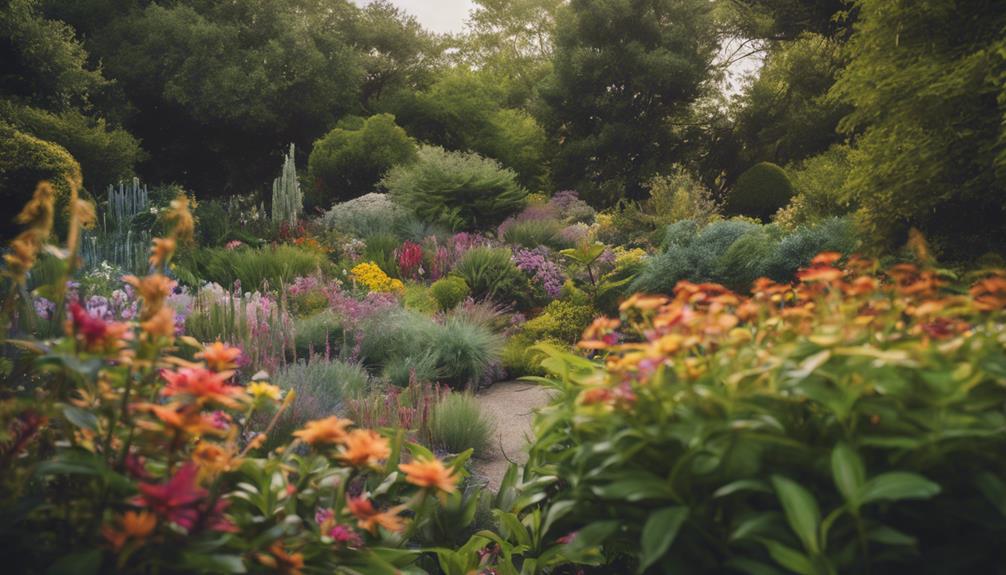
By integrating native plants into your garden, you can enjoy numerous benefits that promote sustainability and biodiversity. Mother Nature smiles upon this choice as native plants require less water and maintenance, making them a sustainable option for your gardening endeavors.
These plants attract local wildlife like birds and butterflies, fostering a healthy ecosystem right in your backyard. Since native plants are well-suited to the local climate, they reduce the need for fertilizers and pesticides, benefiting both your garden and the environment.
Additionally, using native plants helps preserve biodiversity and supports the natural heritage of your region, contributing to the overall health of the ecosystem. By incorporating native plants into your landscaping, you not only enhance the beauty of your garden but also reduce its environmental impact, making it a win-win situation for you and Mother Nature.
Creating a Pollinator-Friendly Environment
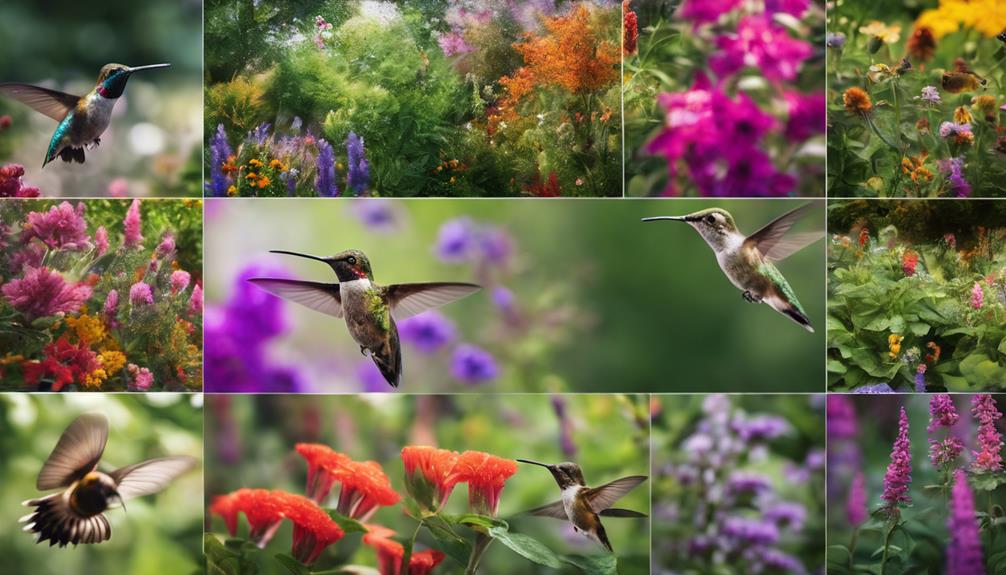
To create a pollinator-friendly environment, start by designing habitats that attract bees and butterflies to your garden.
Select native plants like flowers, herbs, and shrubs to provide essential food sources for these beneficial insects.
Remember to avoid pesticides and incorporate water sources to support pollinators seeking hydration.
Pollinator Habitat Design
Creating a pollinator-friendly environment involves designing habitats that attract and support bees, butterflies, and other important pollinators. When focusing on pollinator habitat design, it's essential to plant native flowers, shrubs, and trees in your garden. These native plants provide essential food sources for pollinators.
To guarantee a continuous food supply, incorporate a variety of flowering plants that bloom at different times, sustaining pollinators throughout the seasons. Additionally, avoiding pesticide use is crucial, as these chemicals can harm pollinators.
Providing nesting sites such as bee hotels and butterfly houses is also pivotal in creating a welcoming environment for these beneficial insects. By implementing these practices, you not only support pollinators but also contribute to biodiversity, improve ecosystem health, and enhance crop yields through better pollination services.
Native Plant Selection
When selecting plants for your garden to attract pollinators, prioritizing native species is essential for creating a thriving ecosystem. Native plants play a pivotal role in supporting local pollinators such as bees, butterflies, and birds. By incorporating native species into your garden, you provide a familiar and nutritious food source for these essential pollinators, helping to conserve biodiversity and promote ecosystem health.
To assist you in choosing the right native plants for your garden, here is a helpful table outlining some common native species and the pollinators they attract:
| Native Plant | Pollinators Attracted | Best Growing Conditions |
|---|---|---|
| Black-Eyed Susan | Bees, Butterflies | Full sun, well-drained soil |
| Purple Coneflower | Bees, Butterflies | Sun to part shade, average soil |
| Wild Bergamot | Bees, Hummingbirds | Full sun to part shade, moist soil |
| Butterfly Milkweed | Butterflies | Full sun, dry to medium soil |
For more information on native plant selection or to share your pollinator-friendly garden success story, feel free to email us at pollinatorparadise@example.com.
Design Tips for Lush Landscapes
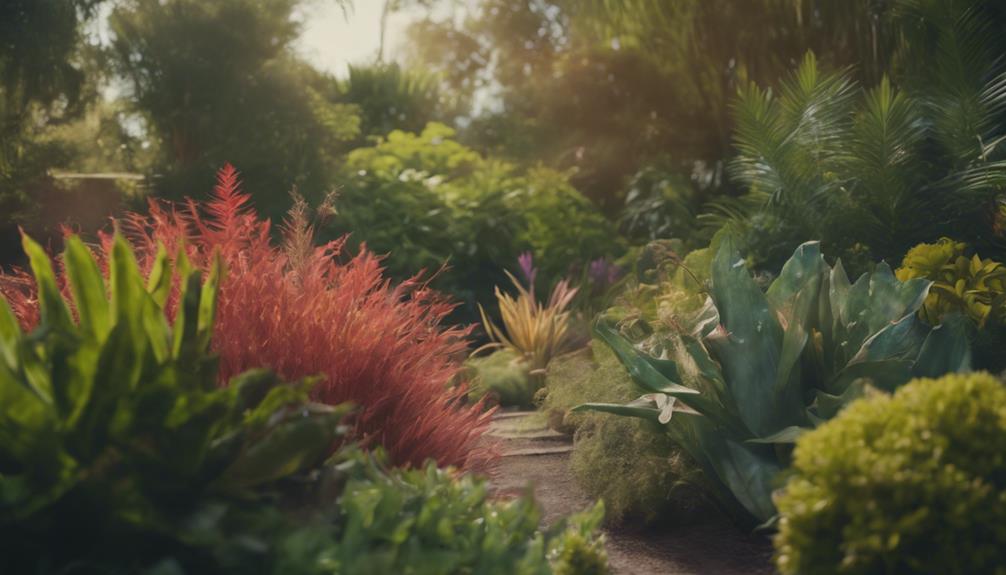
Enhance your garden's abundant landscape by incorporating a variety of plant textures, colors, and heights for a visually dynamic design. Mix and match different plants to create contrast and interest. Combine delicate, intricate foliage with bold, broad leaves to add depth. Consider plants with varying heights to create layers in your garden, providing a sense of fullness and richness.
To achieve a harmonious balance, integrate hardscape elements like pathways and structures with the lush greenery. This juxtaposition adds structure and visual appeal to your outdoor space. Experiment with vertical gardens, raised beds, and container gardening to introduce different levels and dimensions. These planting styles not only maximize space but also create an engaging aesthetic.
Furthermore, think about seasonal blooms and foliage changes to ensure your garden remains vibrant throughout the year. By planning for different stages of growth and flowering, your garden will offer continuous beauty and functionality.
Sustainability Practices in Gardening

Let's talk about how you can make your garden more sustainable.
You can implement eco-friendly gardening methods like composting and rainwater harvesting to reduce waste and conserve resources.
Eco-Friendly Gardening Methods
Implementing eco-friendly gardening methods involves utilizing sustainable practices to minimize environmental impact and promote biodiversity in your garden. By incorporating techniques like composting, rainwater harvesting, and using organic fertilizers and pesticides, you can reduce chemical usage and benefit local ecosystems. Additionally, practices such as crop rotation and companion planting can enhance soil health and plant resilience. These methods not only conserve resources but also create a healthier and more resilient garden environment. When choosing plants for your eco-friendly garden, consider options like Knockout roses, known for their disease resistance and low maintenance requirements. By embracing eco-friendly gardening methods, you contribute positively to the environment while enjoying a beautiful and sustainable garden space.
| Eco-Friendly Gardening Methods | ||
|---|---|---|
| Composting | Rainwater Harvesting | Organic Fertilizers and Pesticides |
| Crop Rotation | Companion Planting | Biodiversity Promotion |
Sustainable Plant Care
To cultivate a sustainable garden, prioritize plant care through organic fertilizers, water-saving techniques, and integrated pest management.
By using organic fertilizers and compost, you can enrich the soil naturally, promoting healthier plants and contributing to fresh air production.
Implementing water-saving methods like drip irrigation and rainwater harvesting not only conserves water but also guarantees that your garden remains sustainable in the long run.
Choosing native plants and practicing integrated pest management techniques help reduce the need for chemical pesticides, maintaining a balanced ecosystem that supports biodiversity.
Composting kitchen scraps and garden waste isn't only environmentally friendly but also provides nutrient-rich soil for your plants to thrive.
Additionally, mulching garden beds with natural materials like straw or wood chips helps conserve soil moisture, suppress weeds, and enhance soil health, all ensuring to the well-being of your garden and the surrounding environment.
Embracing Biodiversity in Urban Spaces
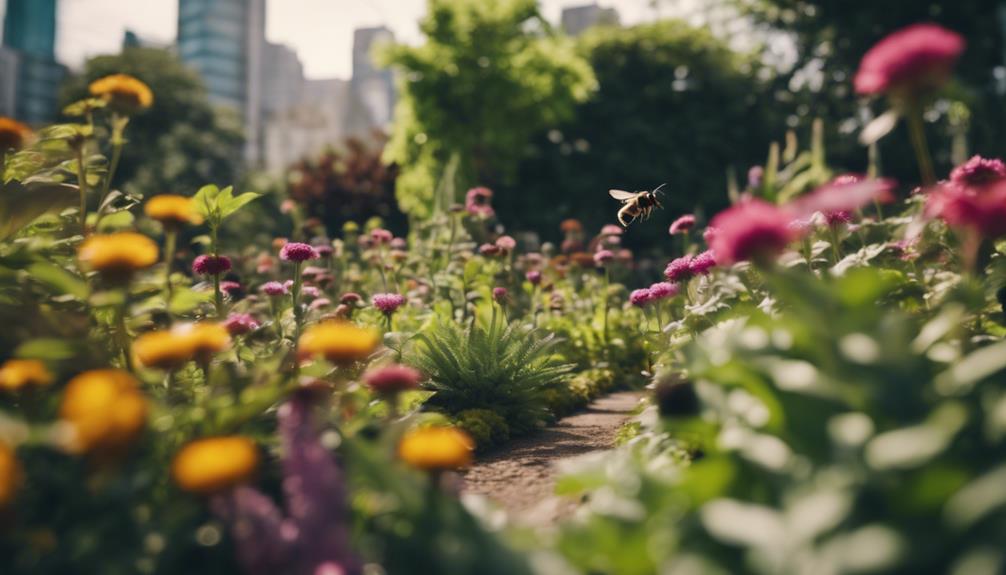
Urban spaces are transforming through the embrace of biodiversity, integrating a diverse array of plant species for environmental sustainability. For a long time, urban gardening has been focused on a limited range of plants, but the shift towards biodiversity is creating positive change.
By incorporating a wide variety of species, urban areas not only enhance their aesthetic appeal but also support local ecosystems. The trend towards biodiversity promotes the health of pollinators and beneficial insects, which in turn contributes to the overall ecological balance within cities.
Embracing biodiversity in urban spaces goes beyond just looks; it creates healthier environments and fosters a deeper connection to nature. This progressive approach aligns with the principles of sustainable living and conservation, making urban gardens not only beautiful but also sustainable ecosystems in their own right.
Frequently Asked Questions
How Can I Incorporate Garden of Eden 2.0 Principles in a Small Urban Garden?
You can incorporate Garden of Eden 2.0 principles in a small urban garden by maximizing vertical space, using companion planting for natural pest control, and creating biodiversity with a mix of native plants and edibles.
Are There Any Specific Native Plants Suitable for a Shady Garden?
In a shady garden, consider native beauties like ferns, hostas, and wild ginger. Their lush foliage dances in dappled sunlight, creating a serene woodland vibe. Embrace nature's embrace with these plants tailored for shade.
What Are Some Creative Ways to Attract Pollinators to My Garden?
To attract pollinators to your garden, plant a variety of colorful flowers such as bee balm, coneflowers, and lavender. Create a water source like a birdbath and avoid pesticides. Incorporate native plants and provide shelter for beneficial insects.
How Can I Design a Low-Maintenance Garden of Eden 2.0 Landscape?
Imagine your garden as a tranquil oasis, requiring little effort to maintain. Start by selecting native plants that thrive in your environment. Incorporate diverse textures and colors for a harmonious, low-maintenance Garden of Eden 2.0 landscape.
What Are Some Sustainable Watering Practices for a Garden of Eden 2.0 Garden?
To keep your garden thriving sustainably, consider rainwater harvesting, drip irrigation systems, and mulching. These practices conserve water, promote healthy plant growth, and reduce the need for frequent watering in your Garden of Eden 2.0 landscape.
Conclusion
You may be thinking, 'But won't all those native plants attract pests?' Actually, native plants attract beneficial insects that help control pests naturally, reducing the need for harmful chemical pesticides.
By embracing Garden of Eden 2.0 planting style, you can create a beautiful, sustainable, and pollinator-friendly environment that will make Mother Nature proud.
So go ahead, let your garden flourish and watch as it becomes a haven for wildlife and a source of joy for all who visit.

